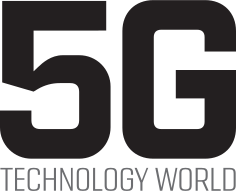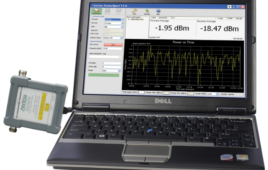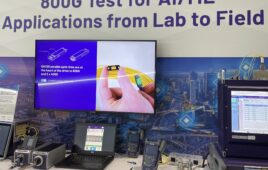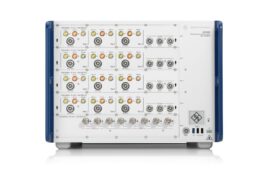Before the testing begins, several policy and business issues need resolution. Stakeholders must agree on one testing methodology, which should combine modeling and real world measurements.
In the same way that no amount of food ever seems to satisfy a hungry teenager, even C-band and mmWave won’t forever meet the demands for wireless data. As researchers eye sub-THz and THz spectrum for future mobile networks, another more reasonable band has come of interest. The debate over 12 GHz spectrum for 5G use is in full swing. Interestingly, the wireless industry can learn some important lessons about the 12 GHz spectrum based on the high-profile C-band fallout between the Federal Aviation Administration (FAA) and Federal Communications Commission (FCC). That controversy made it clear because possible interference with radar altimeters remains unresolved.
Engineering teams working on behalf of the FAA and FCC used somewhat contrasting assumptions to determine whether radar altimeters could handle potential interference in C-band spectrum, with each reaching a different conclusion. The FCC claims that coexistence isn’t possible, and that the test methodology used by the FAA wasn’t realistic. Instead of agreeing on a test methodology and collaborating on a test approach, the FAA has now taken the issue to the court of public opinion, highlighting the potential dangers of 5G interference during flights. Without a common and agreed upon approach to co-existence test in 3.5 GHz (C-band) spectrum, 5G deployment in zones around airports have been delayed.
12 GHz spectrum debate intensifies

Figure 1. The U.S. Frequency allocation chart shows the current state of the 12.2 GHz to 12.7 GHz band. Click image to enlarge.
As the C-band debate rages, the 12 GHz spectrum is inching into the spotlight. From 1996 through 2004, the FCC held various competitive bidding auctions to the 12 GHz spectrum. As a result, satellite communication companies including Dish, DirecTV and Elon Musk’s Starlink now own licenses for the spectrum, whose rules prohibit ground-based transmissions for broadband internet and satellite TV. Despite the effort, 25 years later, at least some of these same licensees are petitioning the FCC to use at least some portion of the 500 MHz available at 12 GHz for 5G use — a rule that would make it significantly more valuable. Figure 1 shows where the 500 MHz portion of the 12 GHz spectrum fits in.
Part of this interest stems from the relative simplicity of using 12 GHz for mobile communication. Unlike mmWave, 12 GHz is somewhat more forgiving of propagation path loss and benefits from availability of higher efficiency semiconductor process technologies like Gallium Nitride (GAN).
While mmWave delivers expanded network capacity in dense cities, the cost of deployment doesn’t bode well for more suburban communities. With shorter range due to atmospheric absorption, mmWave requires a massive investment in wireless infrastructure to cover suburban environments. As the mobile data needs of these communities increase over time, 12 GHz might very well be an option that offers 500 MHz of spectrum at a much lower deployment cost. Indeed, depending on propagation characteristics, the 12 GHz spectrum could deliver the broadband technology many rural communities need because it offers high data rates across a relatively wide coverage area.
At the 2022 INCOMPAS Policy Summit panel discussion in February 2022, participants said opening up the spectrum would solidify U.S. global leadership in 5G, protect the nation’s economic interests, and improve competition, which would give customers more options.
Right now, the 12 GHz spectrum is used only for downlink, or transmitting signals from satellites to Earth. Interference could be created, for example, by base stations on the ground blasting radio waves that desensitize satellite TV receivers.
Though these technical problems loom, the current 12 GHz debate involves policy questions as well. Can the 12 GHz spectrum usage rules change without re-auctioning it? Many argue that at the time of the original auction, the prohibition against ground-based transmissions reduced the value of the spectrum. Thus, merely opening the spectrum to 5G use wouldn’t be fair for all parties. Others argue that the FCC should buy out the incumbents and auction the spectrum for mobile use. In either scenario, a likely outcome is that the incumbent 12 GHz satellite operators remain in some capacity, and with that comes the need for interference and co-existence testing.
Although the cost of interference in the 12 GHz band is not quite as severe as interference in C-band around an airport, we still must characterize and understand it. We’ve learned from the FCC versus FAA disagreement that if all parties cannot agree on the test methodology, they clearly won’t accept the measurement or simulation results. Of course, it’s not as simple as one group “promising” not to produce emissions into the neighboring band.
For example, if your neighbor were to install an underground fuel-oil tank, you would likely have concerns about oil contaminating your soil. You might even file a petition with your local government authorities to stop the construction. After all, you purchased the property under the assumption that you would never have to worry about oil from an underground tank seeping into your yard. On a different scale, incumbents in the 12 GHz band have a similar cause for concern. Given that land-based transmission wasn’t allowed when the 12 GHz spectrum was being auctioned, its only reasonable to expect some guarantee that others using this band for 5G won’t impact existing satellite TV services.
Testing for interference
Although there are lingering public policy questions regarding rightful owners of the 12 GHz band, we can be certain about the need for coexistence testing. The 12 GHz issue differs from the altimeter C-band issue in that terrestrial and satellite signals will use the same 500 MHz, meaning they will need some form of spectrum sharing, perhaps similar to spectrum sharing between 4G/LTE or 5G/CBRS networks. That’s not the case with altimeters and C-band, which occupy different but adjacent bands.
As we learned from the FCC vs. FAA debacle, a good first step is for stakeholders to first agree on the methodology for assessing the interference problem. In theory, the test methodology is straightforward. As with any coexistence testing, a signal source generates interference into a receiver while you measure digital-receiver characteristics such as bit-error rate (BER).
Measurements can answer questions such as “how strong is the interfering signal, how close is the interfering signal, and which receivers do you use to conduct the test?” Because the answers can dramatically affect the conclusions of executing a test, using a third-party arbiter that both sides can trust might be a good approach.
Of course, interference testing is just one aspect of testing necessary to make 12 GHz 5G networks a reality. While mathematical models help in predicting a radio’s performance in the real world, test beds and prototypes are critical to understand the practical performance in a 12 GHz environment.
5G was the first generation of mobile technology receive extensive testing using software defined radios (SDRs) both in the sub-6 GHz and mmWave bands. As wireless networks continue to increase in complexity with cognitive capabilities and advanced beamforming becoming the norm — this will only continue for the 12 GHz band. As commercialization of future bands accelerates, these prototyping systems are also rapidly advancing to help engineers validate key performance benchmarks and shorten time to market.
The need for advanced test and prototyping capabilities becomes more critical as we look towards future generations of wireless, such as 6G. The technologies that 6G might use are in early phases of research. Lead researchers now study the use of sub-terahertz and terahertz spectrum, joint communication and sensing, and even cognitive networks as key innovations. Each technology could introduce new benefits to consumers but could carry its own unique test challenges that the wireless industry will continue to collectively assess.
The value of the 12 GHz spectrum is growing as more industries see its potential. If those industries can agree on one testing methodology to assess 5G interference in this spectrum and beyond, we’ll all reap the benefits.




Tell Us What You Think!